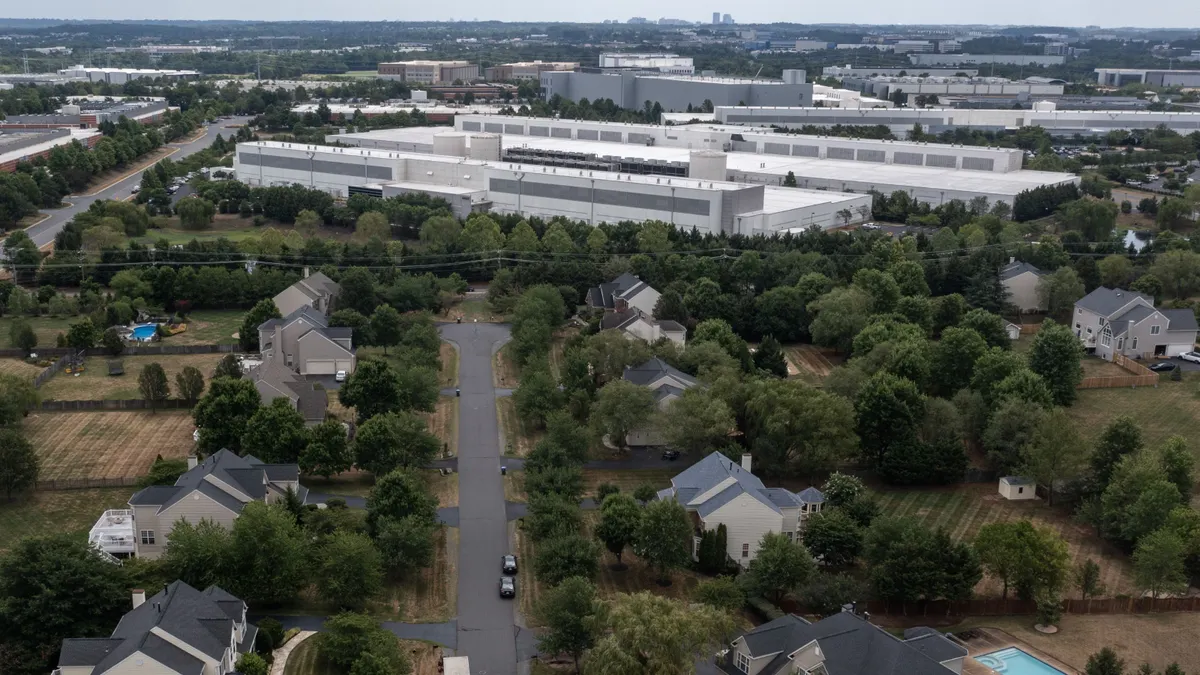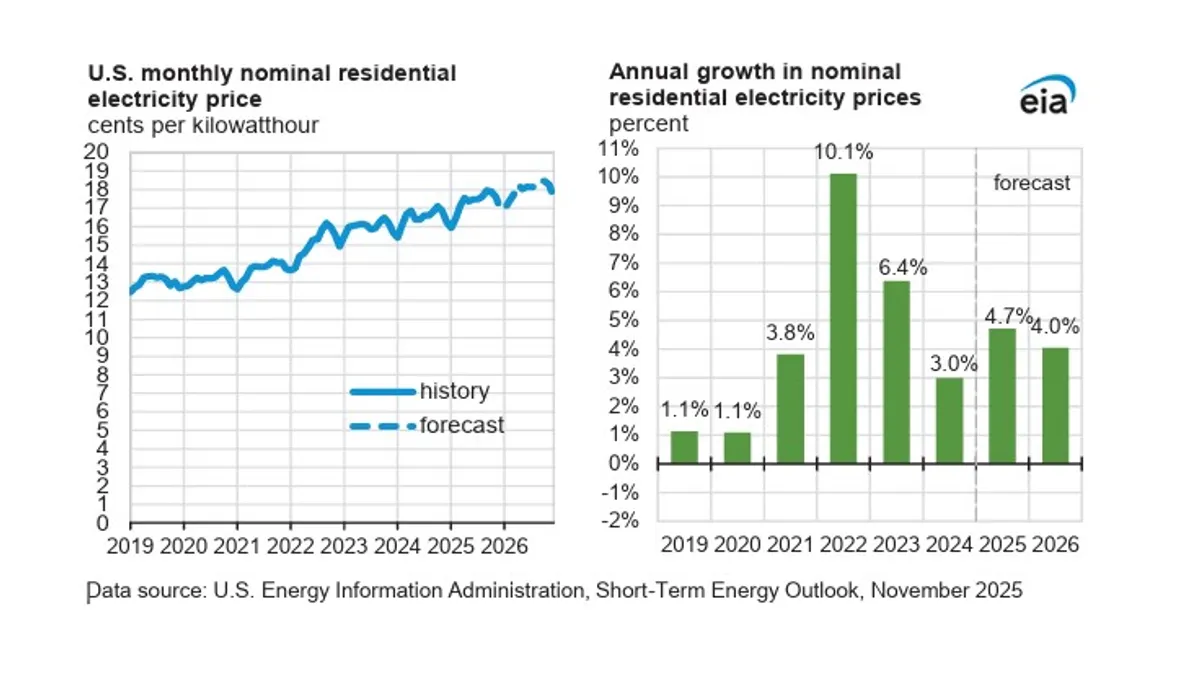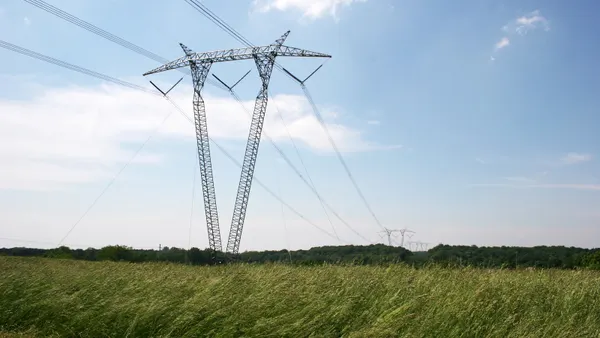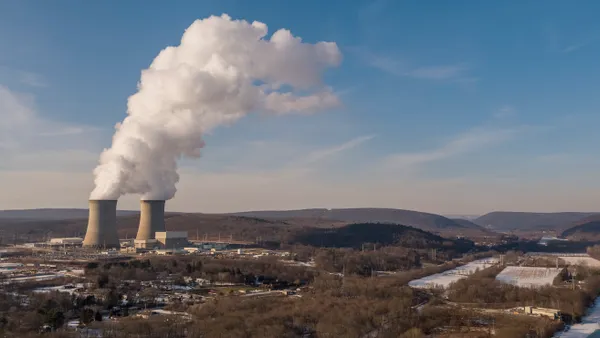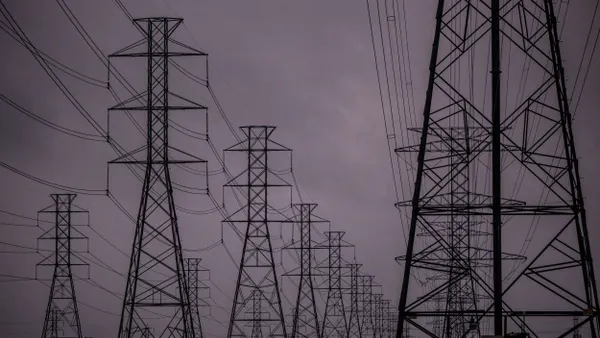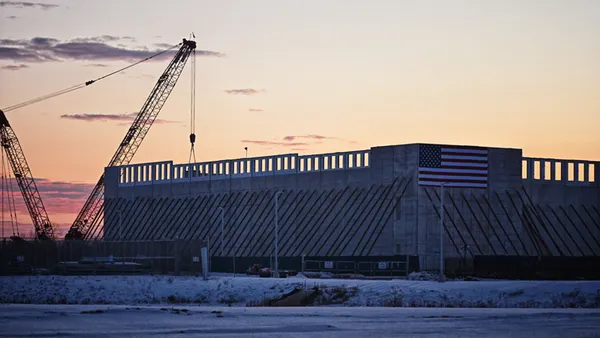Dive Brief:
- There were 30 weather-related events in the United States and Canada that caused more than $1 billion in damages last year, but “none resulted in operator-initiated load shed, unlike previous events of a similar scale,” the North American Electric Reliability Corp. said Thursday in its annual State of Reliability report.
- On whole, the bulk power system “remained reliable but challenged by adverse weather conditions and transitions in resource mix and usage,” according to the report. “Today’s transmission system is demonstrably more reliable and resilient with the severity and duration of outages declining,” the reliability watchdog said.
- The North American grid is challenged by the proliferation of large loads, such as data centers, and the operating profile of inverter-based resources, NERC said. But “reliability improvements were observed in areas with high concentrations of battery energy storage systems,” also known as BESS.
Dive Insight:
The size and speed with which data centers are expanding across the country presents “a significant near-term reliability challenge,” NERC said.
Though there is uncertainty surrounding how much data center capacity will be built, and how quickly, experts agree they are driving up electricity demand. Data centers could account for 44% of U.S. electricity load growth from 2023 to 2028, Bain & Company said in an October analysis.
These large loads can be developed faster than the generation and transmission infrastructure needed to support them, “resulting in lower system stability,” NERC said in its report. “Additionally, the voltage sensitivity and rapidly changing, often unpredictable, power usage of these facilities creates new operating challenges.”
NERC said more accurate models of the operational characteristics of data centers “are essential to reliability to prevent instability caused by these large changes in electricity demand.”
There was also more than 45 GW of new inverter-based capacity added to the bulk power system in 2024, according to NERC’s report. “However, the response by IBRs to system disturbances continues to impact some solar facilities, with ride-through issues being observed at large battery storage and wind plants,” it said.
NERC issued an alert last month which provided recommendations for IBR operators around modeling and performance.
NERC’s report also highlights the potential for batteries to make the grid more reliable. Utility-scale battery storage in the United States is poised to more than double over the next two years and will close out 2026 at nearly 65 GW, the U.S. Energy Information Administration said in its Short Term Energy Outlook published Tuesday.
“Improvements in frequency response are being observed in areas of the country that have high concentrations of battery energy storage systems and incentives in place to encourage or require participation,” NERC said.
In Texas, NERC said battery capacity increased to more than 10 GW in December, and an additional 19 GW is planned by the end of 2025.
“While all industrial battery installations can provide frequency support, in Texas RE, the provision of frequency support (when available) is mandated through a Reliability Standard,” NERC noted. “This requirement combined with the increasing amount of installed capacity, quick response times, and BESS often being in a state of partial charge has positioned these installations as a key part of the Texas Interconnection’s frequency response.”
The Texas grid operated through multiple instances last year where batteries provided up to 100% of the total capacity for frequency regulation services, the reliability organization said.
“These events provide supporting evidence that at current penetration levels, with proper requirements and incentives, BESS can improve primary frequency response, an essential reliability service,” said Jack Norris, NERC’s performance analysis manager.
“While challenges and concerns remain with the rapidly increasing penetration of these resources, their flexible capabilities are currently beneficial to reliability, bolstering their viability as a form of BPS energy storage,” he said.





